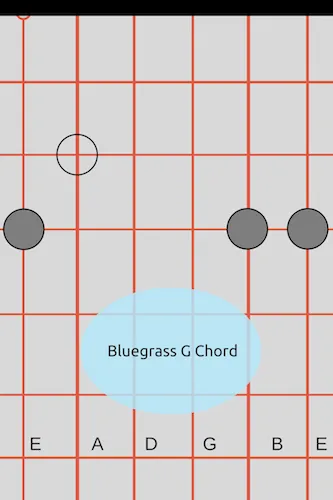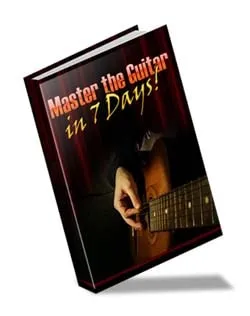Playing good rhythm guitar is not only about strumming the guitar, it is about playing rhythmically and musically. Â Whether you are playing rhythm guitar as a back-up with other players or playing a solo, you need to play in the pulse or groove of the song.
Developing good rhythm takes practice, listening, more practice, and more listening until your instincts to find the pocket become second nature. Rhythm supports the band and keeps the song moving along at the right tempo and feel.
Supporting a singer, fiddler or other instrumentalist with great rhythm is a fun and challenging experience. It is also greatly appreciated and sometime under-rated. To play guitar well you need to be able to play rhythm first.

So, what make a good rhythm guitar player?
- Common sense. While not so common, things like courtesy, respect, listening, and taking turns go a long way in life, including playing rhythm guitar. Simple is good.
- Clear and uncluttered strumming is the goal. No matter the genre, if the rhythm is dragging or uneven, the entire band or ensemble suffers.  In Bluegrass, the “boom-chuck†strumming is essential, and you can play it more open or in the “rest-stroke†manner, or combine the two to add variety and emphasis.Â
- Phrasing is the art and skill of creating suitable little passages that complement the other players. For example: you back off when someone is playing a solo, accentuate the spaces with supporting runs or fills. Changing the dynamics to support the melody is the goal here.
- Solid bass notes on the down-beats keep the song moving and clear. When the tempo starts getting fast you might not have time to really play an entire strum (chuck), so it is even more important to really emphasize the down-beat and bass notes.
- Supportive bass runs that add to the tune, not clutter it up and compete with the melody.
Learning good rhythm guitar is the foundation for playing single note solos and improvising. You have to know the song, with its pulse, groove and rhythm before you can add to it. It’s been said of Tony Rice that he has impeccable timing, and you can just hear and feel it in his playing, never rushed sounding, even when he’s playing Blackberry Blossom 100 mph.
Playing better rhythm guitar
As was previously mentioned, rhythm guitar is really about playing rhythmically. You can have the right technique but not be playing musically; you might as well have a metronome in the band in that case.
If you are just starting out you have to get to the point where you can quickly and comfortably change chords without thinking about it. So you need to learn the basic chord shapes, get some callouses on your fingertips and develop your muscle memory in your hands.
Best chords to practice for beginner guitar
- Key of G — G-C-D
- Key of C — C-F-G
- Key of A —  A-D-E
- Key of E —  E-A-B7
Play these chords and practice changing them over and over again until you can do it well. Play with a backing track, songs on videos, with your friends, with a metronome or while you are singing. One good method is to find a song you know very well, such as Mary Had A Little Lamb or Twinkle Twinkle and practice strumming to these simple songs.
Many traditional, blues and rock songs have only 3 main chords and you can literally plays hundreds of them with the chords mentioned above. By far, the most common key for Bluegrass is G, so learn this key first and really get it down.
A note about the Bluegrass G chord: in order to get that “high, lonesome’†sound, you need to modify the fingering a bit from the conventional G chord. Take a look at the image at the top of the page and you can see how to play the G chord with the Bluegrass voicing. Make sure you dampen the A string with your index finger so the B note does not sound out.
Recommended Online Courses To Play Better Guitar
ArtistWorks
Features Video Exchange and virtuosos
Homespun
Features Dozens Of Artists
Guitar Tricks
Every style you can imagine
Gibson Learn & Master
DVD’s for learning
Recordings Of Great Bluegrass Guitar
Bass runs in rhythm guitar
Bass runs connect phrases and chords changes so the tune can flow along more melodically. Bass runs are an essential part of rhythm guitar playing and help form the pocket for the tune.
It is far better to be understated with the runs than to clutter up the sound space with endless, clever runs. The runs should be a natural feeling climb or fall into the next chord or phrase of the song.
Everybody knows the Lester Flatt G run, in all it’s various forms, be careful not to overdo it. You want the bass to be steady and somewhat predictable, but not to the point of repetition and monotony.
Take a minute to add a comment below and don’t forget to sign up for our free Newsletter!

 Sign up to receive a free ebook: Master The Guitar in 7 days! (available for a limited period)
Sign up to receive a free ebook: Master The Guitar in 7 days! (available for a limited period)
I truly love your site.. Very nice colors & theme.
Diid you create this web site yourѕelf? Pleasе reply Ьack ɑs
I’m planning to сreate my own personal website аnd wօuld likee t᧐ ҝnoᴡ ѡhere ʏοu ggot this from or just ԝhat tһe
theme іѕ named. Cheers!
Thanks! Yes, I created this myself. The theme is Elegant Themes, which I love. I had help with the Start Here First box, it was beyond my abilities. But the rest is pretty much standard Elegant Themes with my artistic sensibilities.